Comprehensive Guide to Recycling White Goods in Bulk Waste Collection
Understanding White Goods Recycling

White goods, commonly referring to large household appliances like refrigerators, washing machines, and ovens, are essential in modern living. However, their disposal can pose significant environmental challenges. Recycling white goods not only helps in minimizing landfill waste but also conserves valuable resources by reusing materials.
Bulk waste collection plays a pivotal role in the efficient recycling of white goods. By organizing large-scale pickups, municipalities and recycling centers can manage the disposal process more effectively, ensuring that these appliances are processed responsibly.
Engaging in white goods recycling contributes to sustainability efforts by reducing the demand for new raw materials, lowering energy consumption, and decreasing greenhouse gas emissions associated with manufacturing new products.
Benefits of Recycling White Goods
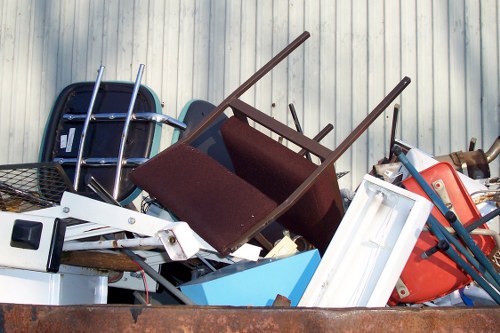
Recycling white goods offers numerous environmental and economic benefits. Firstly, it reduces the amount of waste sent to landfills, thereby extending their lifespan and reducing environmental pollution. Additionally, recycling conserves natural resources by reprocessing materials such as metal, plastic, and glass, which can be reused in the production of new appliances.
From an economic perspective, recycling creates jobs in the collection, transportation, and processing sectors. Moreover, it fosters the development of a circular economy where products are reused and recycled, promoting sustainable growth.
Furthermore, responsible recycling of white goods ensures that hazardous substances like refrigerants and heavy metals are safely managed, preventing them from causing environmental contamination and health risks.
Bulk Waste Collection Process
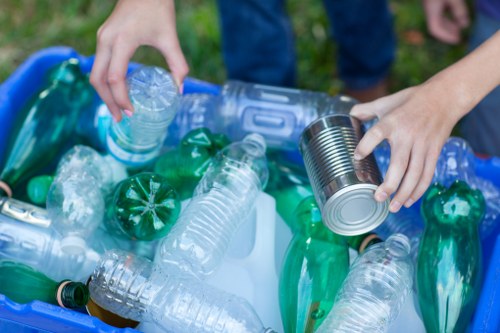
The bulk waste collection process involves several steps to ensure efficient recycling of white goods. It begins with scheduling a pickup, where residents can arrange for large appliances to be collected by the waste management service. Proper preparation of the items, such as disconnecting appliances and removing any detachable parts, is essential to facilitate smooth collection.
Once collected, the white goods are transported to a recycling facility where they undergo sorting and dismantling. Valuable components are extracted and processed for reuse, while non-recyclable parts are disposed of in an environmentally friendly manner.
Advanced technologies, such as automated sorting systems and material recovery units, enhance the efficiency of the recycling process, ensuring maximum resource recovery and minimal environmental impact.
Environmental Impact of White Goods Recycling
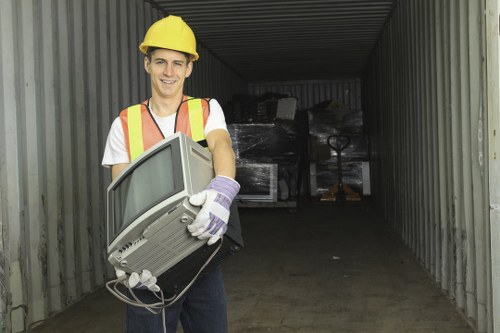
Recycling white goods significantly mitigates the environmental footprint of these appliances. By reusing materials, the demand for virgin resources diminishes, leading to the preservation of natural habitats and biodiversity. Additionally, recycling reduces energy consumption since producing materials from recycled sources typically requires less energy than manufacturing from scratch.
Moreover, proper recycling prevents the release of harmful substances contained in white goods, such as CFCs from refrigerators and lead from washing machines, into the environment. This protection is crucial for maintaining air and water quality and safeguarding public health.
Overall, the environmental benefits of white goods recycling extend beyond waste reduction, contributing to broader sustainability goals and the fight against climate change.
How to Recycle White Goods Effectively
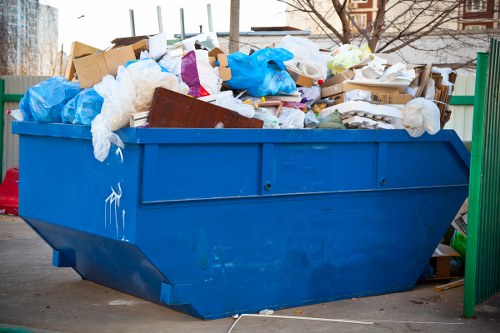
To recycle white goods effectively, it is essential to follow best practices that ensure maximum material recovery and minimal environmental impact. Here are key steps to consider:
- Prepare the Appliance: Disconnect and safely remove any detachable parts. Ensure that the appliance is clean and free from any personal belongings.
- Schedule a Pickup: Contact your local bulk waste collection service to arrange for the pickup of your white goods. Many services offer curbside collection or specialized drop-off points.
- Choose Certified Recyclers: Opt for recycling facilities that are certified and adhere to environmental standards. This ensures that the recycling process is conducted responsibly.
- Follow Local Regulations: Be aware of and comply with local guidelines regarding the disposal and recycling of white goods to avoid fines and ensure proper handling.
- Consider Donation: If the appliance is still functional, consider donating it to organizations or individuals in need before opting for recycling.
By adhering to these steps, individuals can contribute to sustainable waste management practices and promote the effective recycling of white goods.
Challenges in White Goods Recycling
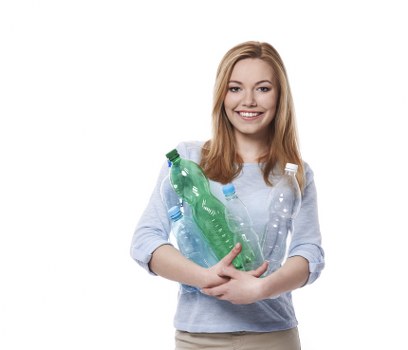
Despite its benefits, white goods recycling faces several challenges that need to be addressed to enhance its effectiveness. One primary challenge is the complexity of the appliances, which are often composed of various materials that require specialized processing techniques. This complexity can make the recycling process more time-consuming and costly.
Another significant challenge is the lack of awareness and education among consumers regarding the importance and methods of recycling white goods. Without proper information, individuals may be unaware of how to dispose of their appliances responsibly, leading to improper disposal practices.
Additionally, logistical issues such as limited collection services, inadequate infrastructure, and high transportation costs can impede the efficient recycling of white goods. Addressing these challenges requires coordinated efforts between government agencies, recycling industries, and the community.
Innovations in Recycling Technology

Advancements in recycling technology are playing a crucial role in overcoming the challenges associated with white goods recycling. Innovative solutions, such as automated dismantling robots and advanced material separation techniques, enhance the efficiency and effectiveness of the recycling process.
For example, automated systems can quickly and accurately sort different materials, reducing the need for manual labor and minimizing the risk of contamination. Additionally, breakthroughs in material recovery processes allow for higher purity levels in recycled materials, making them more suitable for reuse in new products.
Moreover, the integration of artificial intelligence and machine learning in recycling facilities can optimize operations, predict maintenance needs, and improve overall productivity. These technological advancements are essential in making white goods recycling more sustainable and economically viable.
Economic Benefits of Bulk Waste Collection
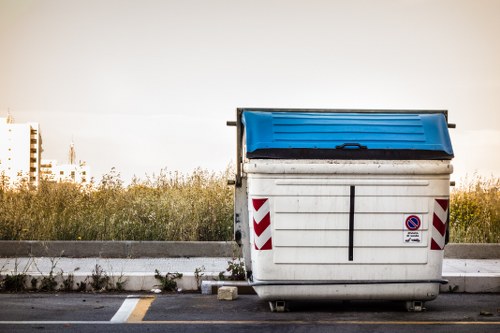
Bulk waste collection systems for white goods recycling offer substantial economic benefits. These systems streamline the collection and processing of large appliances, reducing operational costs through economies of scale. Efficient bulk collection also minimizes the need for frequent pickups, leading to cost savings for both service providers and consumers.
Furthermore, the recycling industry generates employment opportunities in various sectors, including collection, transportation, sorting, and processing. This job creation stimulates local economies and contributes to economic development.
Additionally, the resale of refurbished appliances and recycled materials can provide additional revenue streams, making white goods recycling a profitable venture. By promoting bulk waste collection, communities can capitalize on the economic advantages while advancing environmental sustainability.
Policy and Regulation
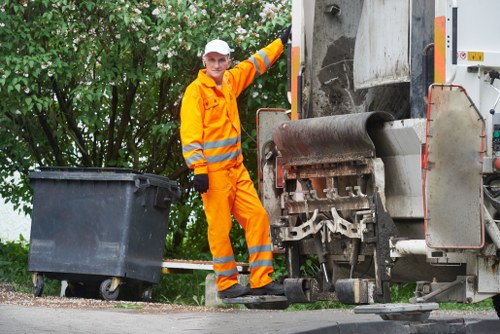
Effective policies and regulations are vital in promoting the recycling of white goods through bulk waste collection. Governments can implement mandates that require manufacturers to take responsibility for the end-of-life management of their products, known as Extended Producer Responsibility (EPR). This approach encourages manufacturers to design appliances that are easier to recycle and to invest in recycling infrastructure.
Additionally, establishing clear guidelines and standards for the collection, transportation, and processing of white goods ensures uniformity and compliance across the recycling industry. Incentives such as tax breaks or subsidies for recycling businesses can also stimulate investment and innovation in the sector.
Public awareness campaigns and educational programs play a crucial role in informing citizens about the importance of recycling white goods and how to participate effectively. By fostering a regulatory environment that supports sustainable practices, governments can enhance the success of bulk waste collection initiatives.
Community Engagement and Education
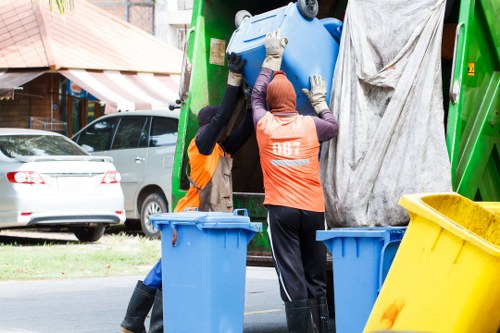
Community engagement and education are essential components in the success of white goods recycling programs. By involving local communities in recycling initiatives, municipalities can foster a culture of sustainability and responsibility. Educational campaigns that highlight the environmental and economic benefits of recycling encourage more residents to participate actively.
Workshops, seminars, and informational materials can provide valuable insights into proper recycling practices, helping individuals understand how to prepare their white goods for collection and the importance of recycling.
Furthermore, partnerships with schools, community organizations, and businesses can amplify outreach efforts, ensuring that a broad audience is informed and motivated to support bulk waste collection and recycling endeavors.
Future Trends in White Goods Recycling
The future of white goods recycling is poised for significant advancements driven by technological innovation and evolving consumer behaviors. Emerging trends include the adoption of circular economy principles, where products are designed for longevity, reuse, and recyclability from the outset.
Smart appliances equipped with tracking technologies can facilitate easier identification and sorting during the recycling process, enhancing efficiency and material recovery rates. Additionally, advancements in chemical recycling and bio-based materials may provide new avenues for processing and repurposing components of white goods.
As consumer awareness continues to grow, there is an increasing demand for eco-friendly products and transparent recycling practices. This shift is likely to drive further investment in recycling technologies and infrastructure, ensuring that white goods recycling becomes more integrated and mainstream in waste management strategies.
Conclusion
Recycling white goods through bulk waste collection is a vital practice for promoting environmental sustainability, conserving resources, and supporting economic growth. By understanding the benefits, overcoming challenges, and embracing innovative technologies, communities can enhance their recycling efforts and contribute to a more sustainable future.
Engaging in proactive recycling practices, adhering to best practices, and supporting policies that encourage responsible waste management are essential steps toward achieving these goals.
Contact us today to learn more about how you can participate in white goods recycling and make a positive impact on the environment.